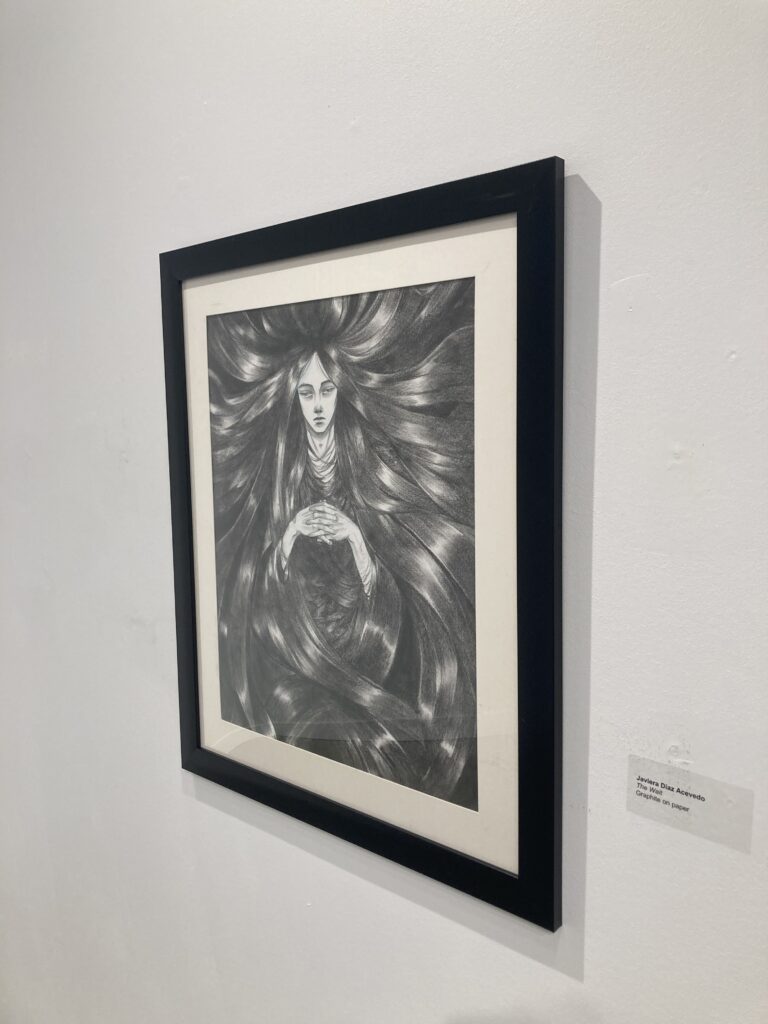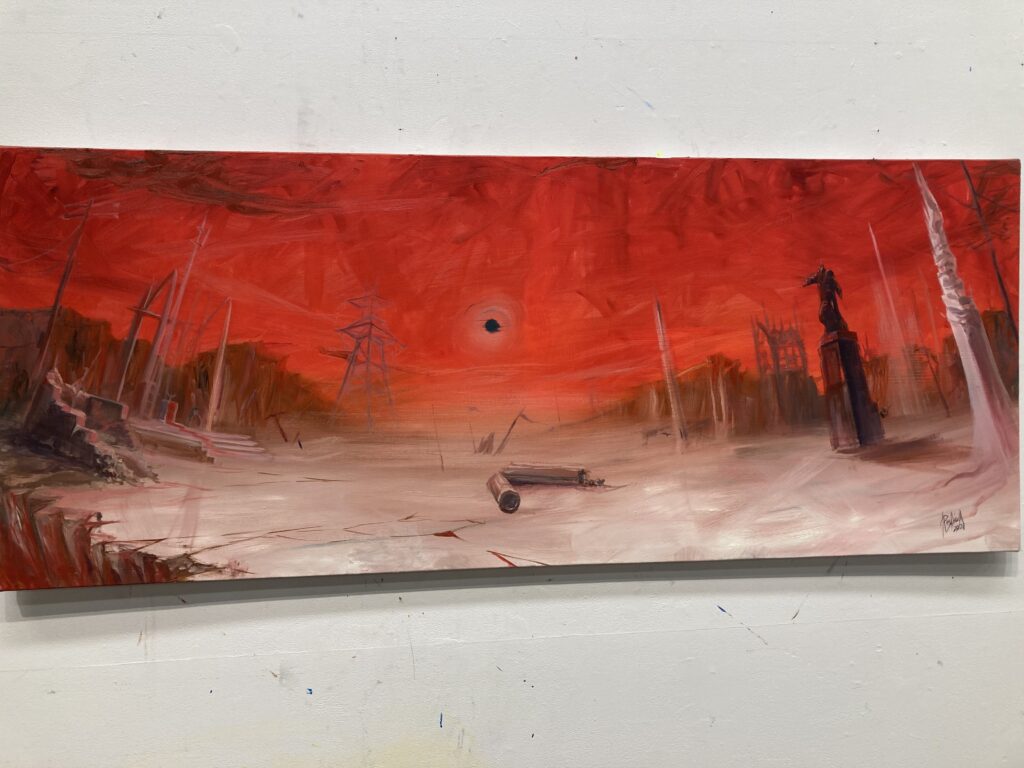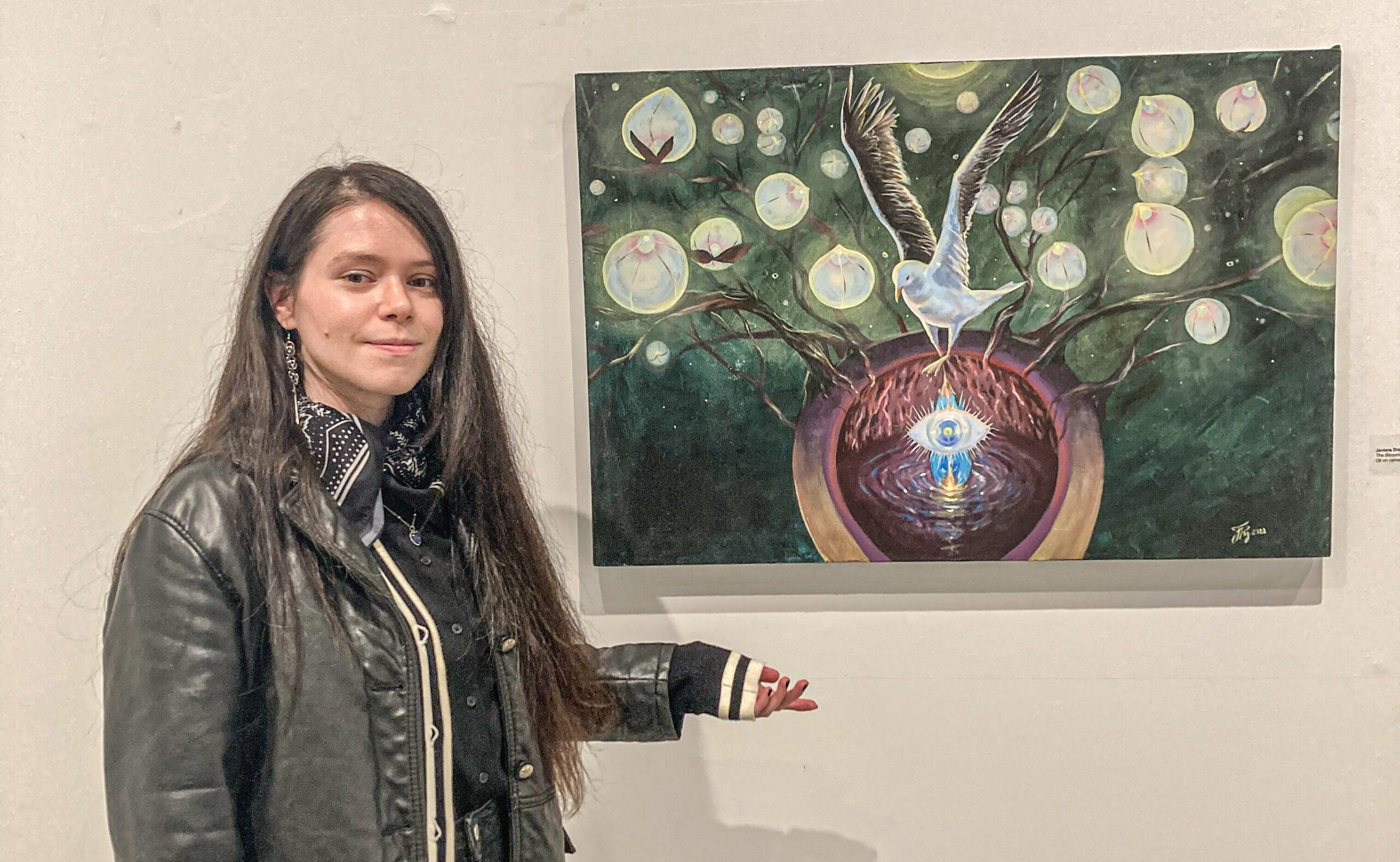The reasons that artists make art differ for each individual, and through this ongoing series, we want to explore them all. The Omega is interested in talking to diverse local artists at TRU and across Kamloops to discuss the complexities of art, why people make art and how it affects the artist and the viewer.
International student Javiera Diaz Acevedo has created a whole world on canvas. Recently, after having her work featured at TRU’s Art Gallery located on the first floor of Old Main, Diaz Acevedo walked the Omega through her process of creating many of her pieces and exploring what art means to her.
“I don’t care about anything else,” Diaz Acevedo said regarding art, a craft that builds up a massive portion of her self-identity. She often spends much of her free time creating both on the canvas and through the digital space.
“I feel like that’s my true self… I am the person in the sketchbook, I am not the person that people talk to,” Diaz Acevedo said.
Diaz Acevedo said that for much of her life, drawing and painting was her way of surviving.
“I think because I was undiagnosed [with autism] as a kid, I had depression for so many years,” Diaz Acevedo said. “I remember going to therapy when I was like nine or ten… I was just a kid, and no one could tell what I had so I was just depressed all the time and drawing all the time so I think this is my way of surviving.”
Born and raised in Santiago, Chile, Diaz Acevedo often struggled to find new ways of pursuing her love of art. She explained to Omega that Chile does not show much support for artists who create original works and instead caters to people who can create art based on famous characters or aspects of trending pop culture.
“In Chile, it’s very tough [for artists]. I know many other artists who are also skilled, but they have no opportunities at all. If you’re born rich, you can become an artist, but if you’re born poor like I was, there’s nothing you can do. We’re kind of these slaves of the system in Chile. It’s a hard word, I know, but it’s true,” Diaz Acevedo said. “Chile was destroyed after the dictatorship we had… so it messed up the whole country, and we’ve never recovered after that. People just kept going, ‘Maybe one day we’ll become a first-world country,’ but that never happened. It was lie after lie. People kept working and believing that; it never happened. I was growing older, and I was like, ‘This is not going to change ever.’ I was born in a poor place in a not-good city. Everything was so hard and I don’t understand how I survived. I think it’s all thanks to my drawings.”
Diaz Acevedo enjoys creating art that most reflects her lived experiences and opinions. As she toured the art gallery and TRU’s painting studio with the Omega, Diaz Acevedo individually described the meaning of some of her work.

The piece “The Wait,” which was displayed in TRU’s Art Gallery in the “People, Places, and Things” exhibition, is about Diaz Acevedo’s personal experiences battling depression and a hard breakup.
“I remember I did [The Wait] for drawing class. It’s called ‘The Wait’ because I was so depressed after I broke up with my ex-boyfriend, and I was so depressed for so long,” Diaz Acevedo said. “I had short hair when I broke up with him, but then I realized that time started to pass, and my hair was growing longer and longer. I wasn’t taking care of myself… [this piece is about] waiting for yourself to feel better. The hair is also all tangled everywhere because she’s trapped in this sadness.”
Diaz Acevedo’s piece, “Ruins of the Future Empire,” is a reflection of the world we’re destroying through capitalism and environmental destruction. It features tall power lines looming over everything, a broken-down church in the background, tall statues of historical figures who have incited colonialism, and cracks forming in the earth.

“I’m more of a thinker than a painter actually,” Diaz Acevedo said. “In [the future], when I’m dead… people will see my paintings and say, ‘Oh, so this is how they felt at that time. They were living in capitalism, and they were destroying the environment.’ I feel that’s important. Art is not just beautiful things; it’s not just pretty faces; it’s also about letting people know about the story that is happening in this era we are living in, like the culture we were living in and how we are surviving through it.”
If you are a local artist or would like to nominate an artist who would like to talk about the arts, please contact the Omega’s Arts Editor, Augustus Holman, by email at auggietaylor6284@gmail.com or by phone at 250-351-9676.

